A Philosophy of Tickling
A sensation between physics and metaphysics
Aaron Schuster
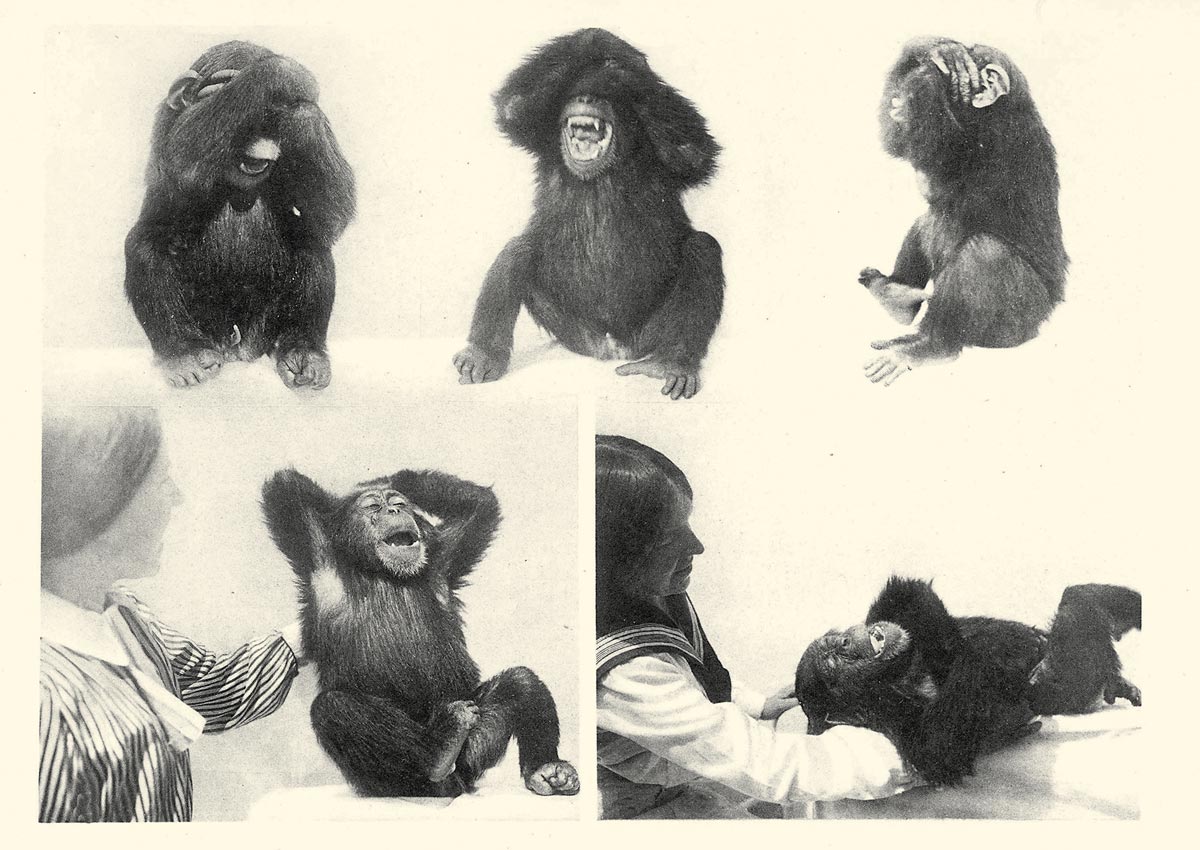
To him that dies, it is all one whether it be by a penny halter, or a silk garter; yet I confess the silk garter pleases more; and like trouts, we love to be tickled to death.
—John Selden, Table-Talk: Being the Discourses of John Selden, Esq., 1689
Why do people laugh when tickled? Why can’t you tickle yourself? Why are certain parts of the body more ticklish than others? Why do some people enjoy tickling and others not? And what is tickling, after all? In fact, it is not so easy to pin down the phenomenon, as a number of scientific studies attest. Here’s one attempt at a precise description: “Tickle may thus be finally defined as an intensely vivid complex of unsteady, ill-localized and ill-analyzed sensation, with attention distributed over the immediate sensory contents and the concomitant sensations reflexly evoked.”[3] Coming at the end of some fifty pages of scientific investigation, such a vague and “ill-analyzed” conclusion might well disappoint. But perhaps there is a lesson to be learned here: any definition of tickle must be able to account for its lack of definition, its equivocal and evasive dynamism. Another researcher, Thomas Mintz, tried to render tickle’s shifting character by highlighting precisely this wandering mobility: “tickle—the itch that moves.”[4] As Mintz argues, tickle, itch, and pain are very closely related on a neurological level, yet are interpreted by the brain as distinct phenomenological states: whereas an itch is experienced as a well-localized sensation that is “on” the skin and may be reached by scratching, a tickle consists in a shifting stream of stimuli that is “outside” us, and against which we push in convulsions and spasms. Pain, on the other hand, is “inside” and thus cannot be escaped.[5] In an article now considered a classic in tickle studies, psychologists G. Stanley Hall and Arthur Allin distinguish two types of tickling: the first, which they name knismesis, is caused by a light movement across the skin, the feather-type of tickle, while the second, gargalesis, is provoked by the stronger pressure of poking and other movements. If the latter is more commonly associated with play and laughter, the former contains tickling’s true mystery:
Why is it that contact with the finest hair, wool, or cobweb evokes sensations that are not only exceedingly intense, but also very widely irradiated, and also provokes reflex movements that may be convulsive in their intensity, but when the same pressure, it may be of the same object and upon the same spot, is slightly increased, only the localized and moderate impression of touch is produced, with proper or no motor reactions?[6]
Does not tickling violate the basic mechanism of cause and effect, the principle that every action entails an equal and opposite reaction? The tiniest stroking produces a wildly explosive response, while a more vigorous rubbing may hardly elicit any reaction at all. On the most stupid bodily level, there is something miraculous in the activity of tickling that seems to contravene the everyday experience of causality, turning us into spontaneous philosophical skeptics. It is as if the lived body were split into two: a practical body governed by regular principles and interactions, and an oversensitive flesh that, with the slightest tingle, is apt to plunge all coordination and mastery into spasmodic helplessness.[7]
Let us focus on one detail of Provine’s theory, a rather extravagant speculation. Linking tickling not only with humorous laughter but also with the prehistoric birth of comedy, Provine writes: “I forge recklessly into the paleohumorology fray, proposing my candidate for the most ancient joke—the feigned tickle. (Real tickling is disqualified because of its reflexive nature.) The ‘I’m going to get you’ game of the threatened tickle is practiced by human beings worldwide and is the only joke that can be told equally well to a baby human and a chimpanzee. Both babies and chimps ‘get’ this joke and laugh exuberantly.”[9] Here we should underline the subtlety of Provine’s argument: ticklish laughter is not yet properly comic because it is too much of an automatic or neurological reaction. The joke first enters the scene with a distancing from reflex, when the tickling play is itself played with and made into a spectacle, when the suspended, not the real, gesture gets a laugh. The Ur-joke, the zero-degree of comedy, the pretend tickle may also be seen as a primordial manifestation of culture as a virtual space detached from immediate reflex and natural instinct.
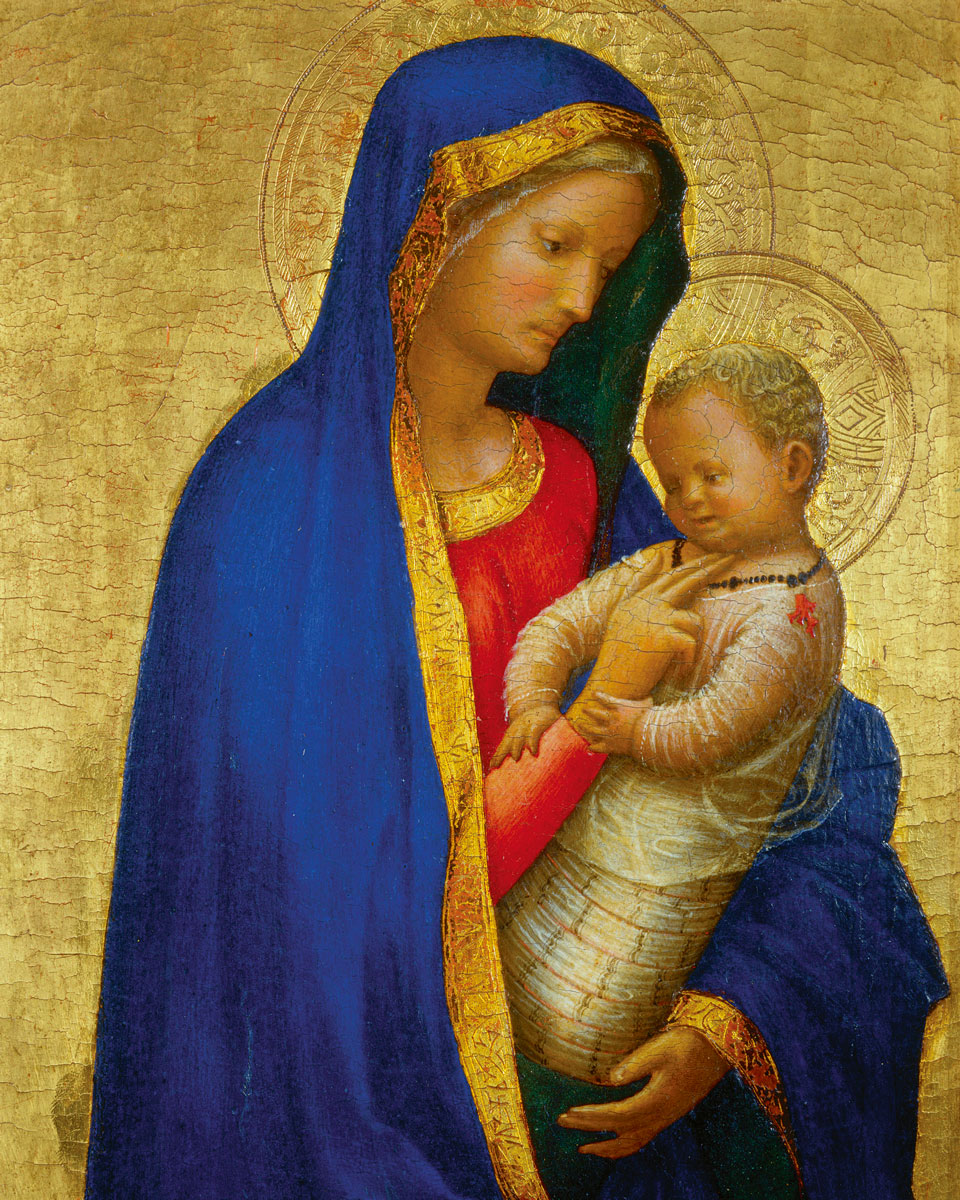
Arthur Koestler anticipated this hypothesis in his wide-ranging study The Act of Creation:
Thus tickling a child will call out a wriggling and squirming response. But the child will laugh only—and this is the crux of the matter—if an additional condition is fulfilled: it must perceive the tickling as a mock attack, a caress in a mildly aggressive disguise. This explains why people laugh only when tickled by others but not when they tickle themselves. …
The mechanism is essentially the same as in comic impersonation: the tickler impersonates an aggressor, but is simultaneously known not to be one. It is probably the first situation encountered in life which makes the infant live on two planes at once, the first delectable experience in bisociation—a foretaste of pleasures to come at the pantomime show, of becoming a willing victim to the illusions of the stage, of being tickled by the horror-thriller.[10]
In other words, tickling stands as the momentous entry-point into the universe of pretense, fiction, and simulation, or to cite the Greek term, mimesis. As we shall see, the relationship between tickling and theater is a profound one.
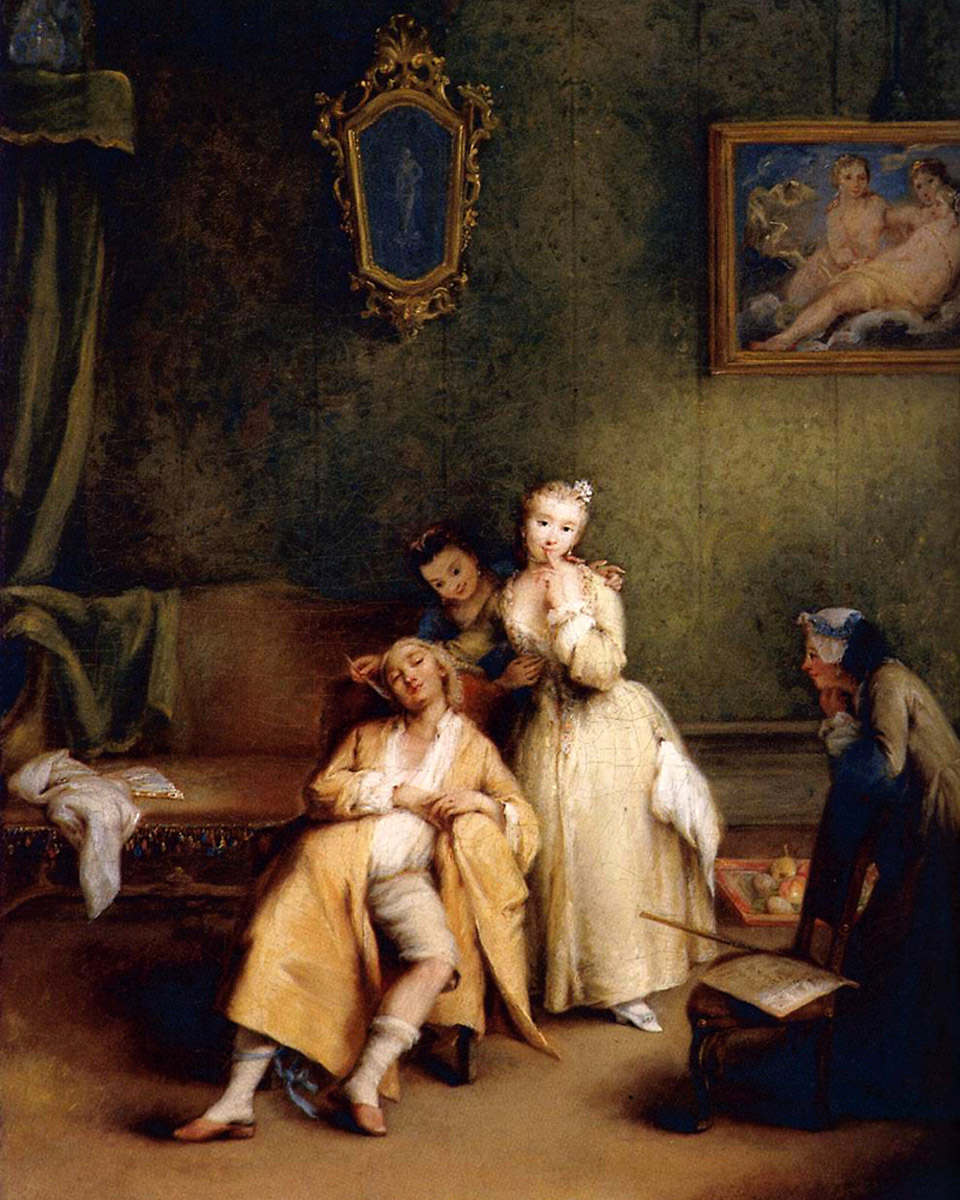
Freud’s difficulties in coming up with a general definition of pleasure are well known. At a key point in the Three Essays on the Theory of Sexuality, he observes that “there can be no doubt that the stimuli which produce the pleasure are governed by special conditions, though we do not know what those are. A rhythmic character must play a part among them and the analogy of tickling is forced upon our notice.”[15] Freud returns to this idea later in his work, tentatively suggesting that the specific “qualitative characteristic” of pleasure is “perhaps … the rhythm, the temporal sequence of changes, rises and falls in the quantity of stimulus. We do not know.”[16] Freud’s suggestion that pleasure depends on a temporal factor, a rhythmic movement analogous to tickling, is in fact an old and much-discussed thesis. In the modern era, it may be traced back to Descartes’s theory of tickling as a specific form of nervous stimulation. Descartes argued that the pulling of the nerve fibers creates a pleasing sensation of “titillation” that, in its cause, is very close to pain.[17] Pleasure arises “when the objects of the senses produce some movement in the nerves which would be capable of harming them if they did not have enough strength to resist it.”[18] Titillation is a rhythmic vibration through which the soul feels its own life and union with the body; the soul experiences the body’s “healthy condition” and “strength” precisely when these are tested by strong stimulus. Pain, on the other hand, “results from an action so violent that it injures the nerves”: titillation tips into torture.[19]
The enjoyment of tickling further explains why there is pleasure even, and especially, in negative passions, since they too touch the soul and cause it to vibrate. With this, the inquiry into tickling brings us back to the theater. If there was one single problem that obsessed early modern aesthetics, it was that of understanding the enjoyment of tragedy. Why do people like seeing frightening, depressing, or heart-wrenching spectacles? Descartes’s answer: “We naturally take pleasure in feeling ourselves aroused to all sorts of passions—even to sadness and hatred—when these passions are caused merely by the strange happenings we see presented on the stage, or by other such things which, being incapable of harming us in any way, seem to affect our soul by titillating it.”[20] The passions provoked by a theatrical play act on the mind like the proverbial feather tingling the foot, causing it to quiver and jump. The ticklish body is doubled by a ticklish soul; tickling calls not only for a physics, but also a metaphysics.
the soles of a victim’s feet were covered with a salt solution so that a goat, attracted by the salt, would lick it off with his rough tongue and continually tickle the skin. By so doing, the salty skin was gradually rasped away. Then, the wounded skin would again be covered with the biting salt solution—ad infinitum, till the victim died from the torture.[22]
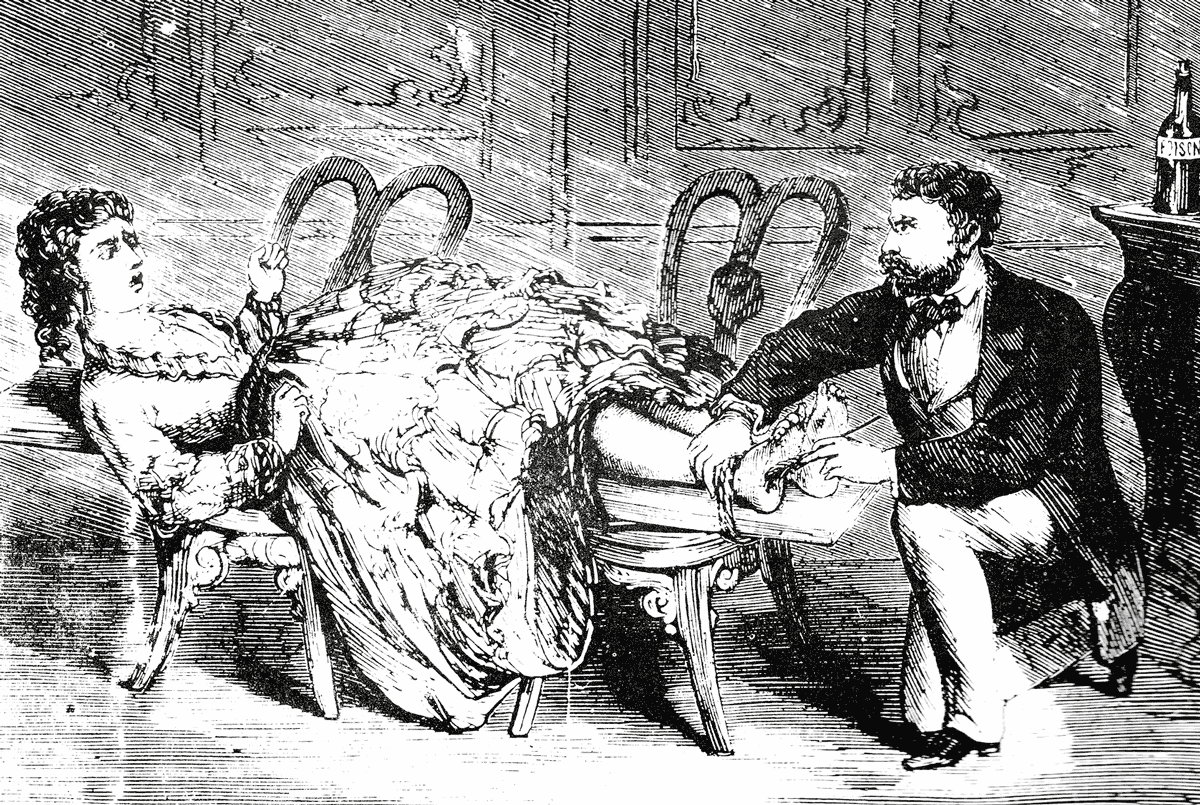
Apart from these extreme instances, Meerloo argues that the more significant link between tickling and death passes by way of erotic pleasure. The paroxysms of tickling evoke the self-loss and abandonment of sexual gratification. “In a deeper sense, being tickled to death means taking part in sexual orgasm and experiencing the sterbe und werde feelings (to die and to be resurrected) provoked by deep ecstatic sexual satisfaction.”[23]
There is one particularly convoluted case of death by tickling that features prominently in the history of philosophy, thanks to Jacques Derrida’s meditations in his 1972 book Dissemination. At the beginning of the section titled “The Double Session,” Derrida juxtaposes two texts: a passage from Plato’s Philebus dealing with the problem of mimesis, and “Mimique” (Mimic), a one-page review by Stéphane Mallarmé of a pantomime. The show in question was a play by Mallarmé’s cousin Paul Margueritte, a French writer known mainly for the historical fictions he wrote with his brother Victor. But he also became famous in the day for his singular take on the age-old story of Pierrot the clown. Margueritte, an amateur but dedicated mime, effectively reinvented the Pierrot legend at the end of the nineteenth century, transforming the traditional sad clown into a properly modern neurotic character. Margueritte later described his creation as “a refined Pierrot, neurotic, cruel, and ingenuous, a Protean figure of contrasts, a touch sadistic, totally soused, and perfectly villainous.” In sum, “a tragic nightmare in the style of Hoffmann and Poe.”[24] The story of Pierrot assassin de sa femme (“Pierrot, murderer of his wife”) was inspired by a couplet from the writer, critic, and Pierrot-enthusiast Théophile Gautier:
The tale of a husband who tickled his wife,
And thus made her laughingly give up her life.[25]
The action begins post festum. Pierrot has just returned home with the gravedigger after having buried his wife, Columbine. The two are swigging cognac, but a perceived slight causes Pierrot to abruptly turn out his guest. Fueled by alcohol, he begins thinking back to the crime. Why did he do it? “She pinched my gold; my best wine she drank; my back she gave a drubbing… A cuckold, yes, she made me a cuckold, and with a vengeance.” There were plenty of reasons, but “what does that matter?” He murdered her out of fancy, just because he is the master. Then, as if suddenly projected back in time before the deed, Pierrot begins to deliberate: How shall I do it? He runs through and rejects several possibilities as either too messy or too incriminating (rope, knife, sword, poison, and gun), then, while rubbing his foot, the tingling sensation leads him to the perfect solution: I’ll tickle her to death! Pierrot now proceeds to a delirious reenactment of the crime. Columbine is sleeping; he sneaks up on her, draws the curtains around the bed, then binds her arms and legs with rope and gags her. Just at the moment Pierrot begins his tickle torture, he suddenly turns into Columbine, writhing on the bed in “frightful gaiety” and begging Pierrot to stop. Insensitive to her cries, the mad clown presses on until she is finally overwhelmed and, in a “supreme spasm,” expires. Pierrot turns back into himself. He inspects the imagined corpse, first half-disbelieving that Columbine is really dead, then pleased with his perpetration of the perfect crime. All this hard work has made Pierrot sleepy. As he starts to undress, he notices that his feet are shaking, as if possessed by an involuntary dance. The jig becomes more and more feverish, until he is frantically running about the room. The clown tries to drown his accursed writhing in still more booze, but to no avail. His eyes fall upon the portrait of Columbine. She is mocking him and tickling him from beyond the grave. Pierrot’s body is seized with convulsive trembling as he too, following his wife, dies in a fit of mad laughter.[26]
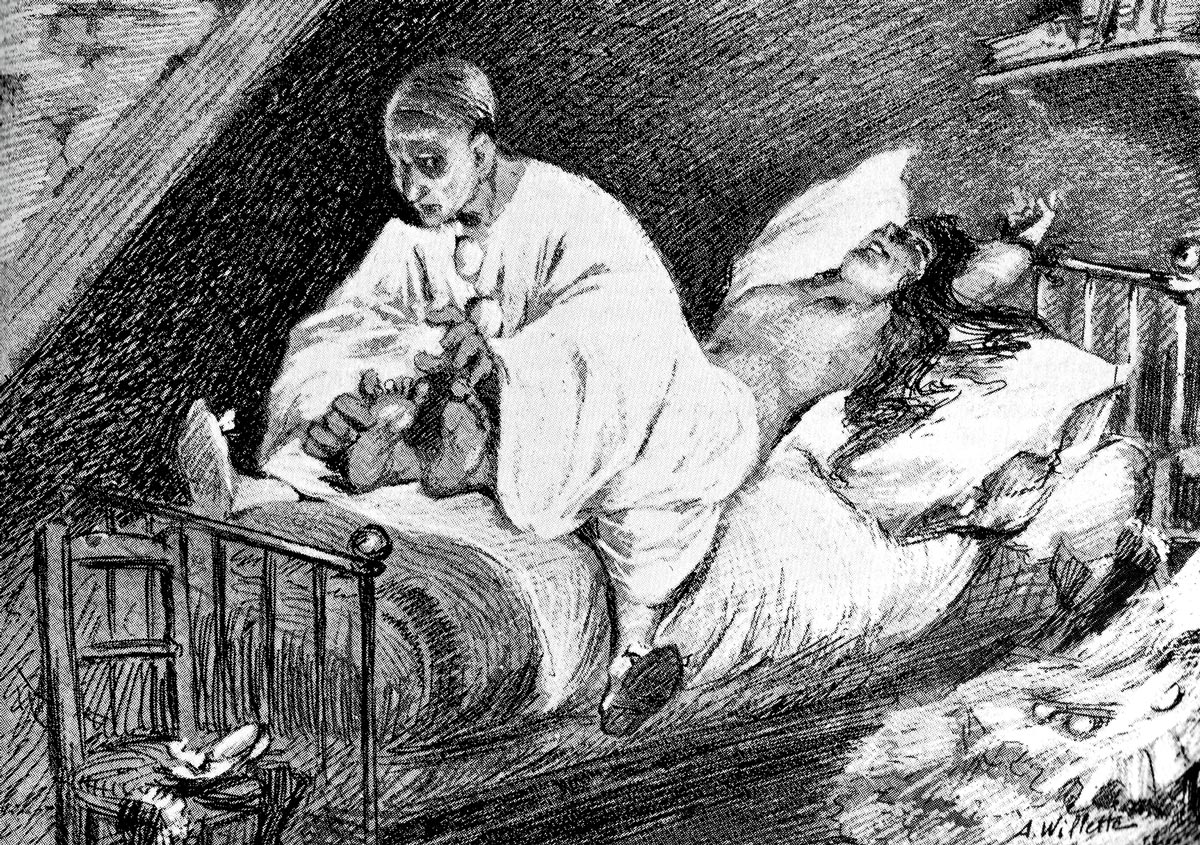
Doubtless the most remarkable scene of tickling ever conceived, Margueritte’s virtuoso performance, along with Mallarmé’s dense one-page review and Derrida’s extensive philosophical commentary, would call for a much longer discussion than I can undertake here. Suffice it to outline why Derrida considers the theoretical stakes to be so high. For Derrida, in its sophistication and dramatic subtlety Margueritte’s performance challenges the very notion of imitation and mimesis, as bequeathed to us by Plato and the philosophical tradition. The distinctions between model and copy, reality and simulation, essence and appearance lose their clear lines and become exquisitely blurred. In Mallarmé’s words, the play unfolds in a “pure medium of fiction.”[27] The mime not only pretends to be a murderous clown, but, in a pretended delirium, loses the very coordinates of his feigned identity, first becoming the clown’s ticklishly executed spouse and then, in another reversal, the victim of tickle-torture himself. Exactly who is miming what here? In fact, the exploit named in the play’s title is never directly shown. Pierrot devises the “perfect crime,” murder by pure enjoyment (the Nietzschean “best life”[28]), an assassination that leaves no marks or traces. But in this theater of cruelty the thing itself is only ever alluded to: at the beginning, the murder is a done deed (it has already happened), then it is retrospectively reconstructed (it is going to happen, or better: it will have happened), and finally it is repeated (it happens again) in an alcohol-soaked frenzy where the perpetrator turns into the casualty. To again cite Mallarmé, there is but “the false appearance of a present”[29]—Derrida will claim that Pierrot does not assassinate his wife, at least not in any unproblematic “here and now”—and the act of imitation is always and at the same time deviously displaced. Margueritte’s performance is no simple act of mimicry, of copying or re-presenting an action, but a performance of the act of mimicry itself, a mimesis mimeseoos, a redoubled imitation. “The Mime… is not an imitator; he mimes imitation.”[30] There is something uncontrollable and dangerous in this, and the play’s “pretended pretense” could be read as a kind of cautionary tale. What happens to Pierrot? In the act of mimicking, the mime becomes the dupe of his own imitation, the tickler tickled by his tickling. It is as if, in this twisted tale of fatal ecstasy, mimesis itself were the truly ticklish affair.
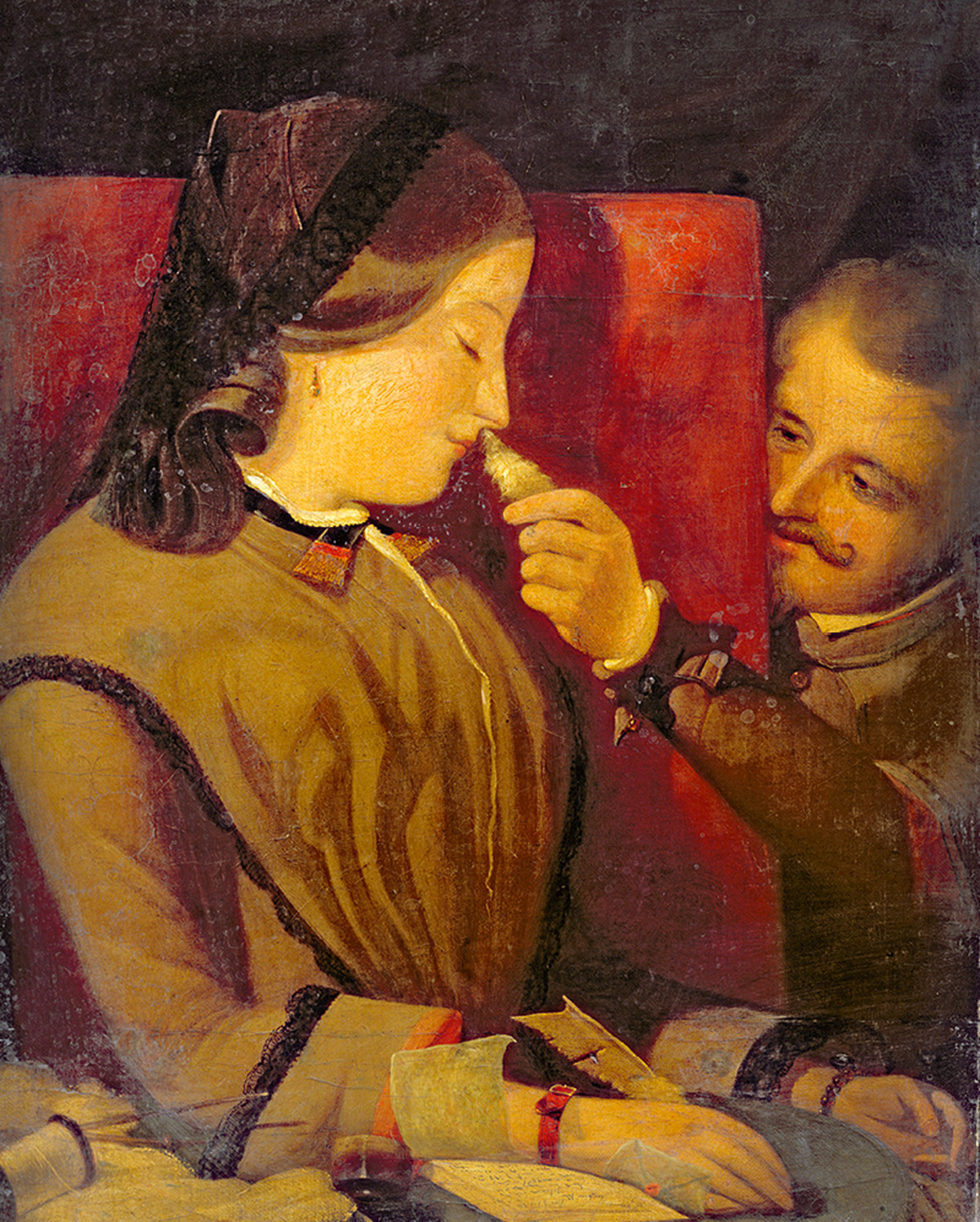
One further observation. Like the double, not to say simultaneous, spasm of Columbine and Pierrot, there are also, on the level of the interpretation of the text, two overlapping yet distinct vibrations: on the one hand, the trembling-unto-death of the tragic nightmare, the violent sexual phantasm of Margueritte’s possessed clown, and on the other, the “vibratory suspense”[31] of the aesthetic idea, the pure medium of fiction of Mallarmé’s “poignant and elegant mime.” If in the first, desire is lethally fulfilled (like Lacan says, enjoyment begins with a tickle and ends in a blaze), with the second, we remain suspended between “desire and fulfillment,” poised, as it were, on the thinnest edge, “without breaking the ice or the mirror.”[32]
Darwin noted that “the imagination is sometimes said to be tickled by a ludicrous idea; and this so-called tickling of the mind is curiously analogous with that of the body.”[33] Is not tickling itself such a ludicrously ticklish idea? Here I wish to confirm this mind-body analogy, and suggest a path for its further elucidation: tickle as the precarious bridge between a touchy physics and an improbably volatile metaphysics.
See press about “A Philosophy of Tickling” on the New Yorker’s Page-turner blog.
- Aristotle, Parts of Animals, III, x, 673a2–8, trans. A. L. Peck (Cambridge, MA: Harvard University Press, 1937), p. 281.
- Aristotle, Sense and Sensibilia, IV, 441a1–2, in The Complete Works of Aristotle, vol. 1, ed. Jonathan Barnes, trans. J. I. Beare (Princeton: Princeton University, 1984), p. 10.
- Elsie Murray, “A Qualitative Analysis of Tickling: Its Relation to Cutaneous and Organic Sensation,” The American Journal of Psychology, vol. 19, no. 3 (July 1908), p. 344.
- Thomas Mintz, “Tickle—The Itch That Moves,” Psychosomatic Medicine, vol. 29, no. 6 (1967).
- Ibid., p. 608.
- G. Stanley Hall and Arthur Allin, “The Psychology of Tickling, Laughing, and the Comic,” The American Journal of Psychology, vol. 9, no. 1 (October 1897), p. 11.
- In a typically postmodern way, tickling has now been recuperated as a health benefit: tickle spas have recently opened in Spain and Poland, perhaps the beginning of a new spasmic wellness trend.
- See Jaak Panksepp and Jeff Burgdorf, “‘Laughing’ Rats and the Evolutionary Antecedents of Human Joy?,” Physiology & Behavior, vol. 79 (2003), pp. 533–547.
- Robert R. Provine, Curious Behavior: Yawning, Laughing, Hiccupping, and Beyond (Cambridge, MA: The Belknap Press of Harvard University Press, 2012), p. 55.
- Arthur Koestler, The Act of Creation (London: Hutchinson & Co., 1964), pp. 80–81.
- Jacques Lacan, “Seminar XIV: La logique du fantasme, 1966–67” (unpublished), session of 14 June 1967.
- Benedict de Spinoza, Ethics, Part III, Proposition 11, Scholium: “The emotion of pleasure when it is simultaneously related to mind and body I call Titillation [titillatio] or Cheerfulness [hilaritas]; the emotion of pain when it is similarly related I call Anguish [dolor] or Melancholy [melancholia]. But be it noted that titillation and anguish are related to man when one part of him is affected more than others, cheerfulness and melancholy when all parts are equally affected.” See Spinoza: Complete Works, ed. Michael L. Morgan, trans. Samuel Shirley (Indianapolis: Hackett, 2002), p. 285.
- Jacques Lacan, The Seminar of Jacques Lacan, Book XVII: The Other Side of Psychoanalysis 1969–1970, ed. Jacques-Alain Miller, trans. Russell Grigg (New York: W. W. Norton, 2007), p. 72.
- “Was ist das beste Leben? Zu Tode gekitzelt werden.” See Nachgelassene Fragmente, eds. Giorgio Colli and Mazzino Montinari, Summer–Fall 1882, fragment 133. Available at www.nietzschesource.org/#eKGWB/NF-1882,3[1].
- Sigmund Freud, Three Essays on the Theory of Sexuality in The Standard Edition of the Complete Psychological Works of Sigmund Freud, trans. James Strachey (London: Hogarth, 1955), vol. 7, p. 183.
- Sigmund Freud, “The Economic Problem of Masochism,” Standard Edition, vol. 19, p. 160.
- René Descartes, Treatise on Man, in The Philosophical Writings of Descartes, vol. 1, trans. John Cottingham, Robert Stroothoff, and Dugald Murdoch (Cambridge: Cambridge University Press, 1985), p. 103.
- René Descartes, The Passions of the Soul, in The Philosophical Writings of Descartes, vol. 1, p. 362.
- Ibid.
- Ibid.
- Laurent Joubert, Treatise on Laughter, trans. Gregory David De Rocher (Tuscaloosa: University of Alabama Press, 1980), p. 61.
- Joost A. M. Meerloo, “The Biology of Laughter,” Psychoanalytic Review, vol. 53, no. 2 (1966), p. 36. Havelock Ellis notes that “a number of instances have been recorded of death resulting from tickling, and there is no reason to doubt the truth of the statement that Simon de Montfort, during the persecution of the Albigenses, put some of them to death by tickling the soles of their feet with a feather.” See Ellis, Studies in the Psychology of Sex, vol. 4 (Philadelphia: F. A. Davis, 1927), p. 15.
- Joost A. M. Meerloo, “The Biology of Laughter,” p. 36; emphasis in original.
- Paul Margueritte, Nos Tréteaux (Paris: Dorbon Aine, 1910), p. 15. My translation.
- Ibid. My translation.
- Originally published as a pamphlet in 1882, an excellent translation was made by Daniel Gerould, “Pierrot Assassin of His Wife,” The Drama Review, vol. 23, no. 1 (March 1979), pp. 113–118. See also Gerould’s informative commentary “Paul Margueritte and Pierrot Assassin of His Wife,” included in the same issue.
- Stéphane Mallarmé, Divagations, trans. Barbara Johnson (Cambridge, MA: Harvard University Press, 2007), p. 140.
- In a nice coincidence, Nietzsche penned his tickling note the same year as the publication of Margueritte’s play.
- Stéphane Mallarmé, Divagations, p. 140; emphasis in original.
- Jacques Derrida, Dissemination, trans. Barbara Johnson (Chicago: University of Chicago Press, 1981), p. 219.
- Jacques Derrida, quoting Mallarmé, Dissemination, p. 210.
- Stéphane Mallarmé, Divagations, p. 140.
- Charles Darwin, The Expression of the Emotions in Man and Animals, ed. Francis Darwin (Cambridge: Cambridge University Press, 2009), p. 210.
Aaron Schuster is a writer and philosopher who lives in Berlin, where he is a fellow at the Institute for Cultural Inquiry Berlin. He teaches at the Sandberg Institute in Amsterdam, and has recently contributed to Zadeva Lubitsch, a collection of essays on Ernst Lubitsch published by the Slovenian Cinematheque, which will soon be released in English.